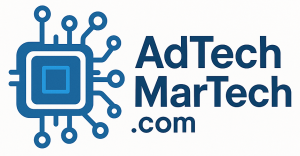In today’s fast-paced business landscape, efficiency is paramount. Organizations across industries strive to maximize productivity while minimizing costs. One powerful tool that is gaining traction in this quest for efficiency is Digital Asset Management (DAM) solutions. By centralizing the storage, organization, and distribution of digital assets, DAM systems are proving to be invaluable for businesses looking to streamline workflows and enhance productivity.
Understanding Digital Asset Management (DAM)
Digital Asset Management refers to a set of processes or software tools used to organize, store, and share digital assets, such as images, videos, audio files, and documents. These solutions provide a robust platform for managing assets through features like version control, metadata tagging, and user access permissions.
Key Features of DAM Solutions
- Centralized Repository: A DAM system serves as a single source of truth for all digital assets, reducing the time spent searching for files across various locations.
- Metadata Management: With customizable metadata fields, users can easily categorize and search for assets, making retrieval quicker and more efficient.
- Version Control: Keeping track of different asset versions helps avoid confusion and ensures that teams are always working with the most up-to-date files.
- Collaboration Tools: Many DAM solutions offer features that facilitate collaboration, allowing teams to share feedback, approve assets, and work together seamlessly.
- User Permissions: Organizations can control who has access to what, ensuring that sensitive assets are only available to authorized personnel.
Benefits of DAM Solutions for Workflow Efficiency
1. Enhanced Accessibility
With a centralized digital repository, teams from various departments can access necessary assets quickly. No longer do they need to sift through countless emails or file systems. This accessibility reduces bottlenecks and accelerates project timelines, boosting overall productivity.
2. Reduced Redundancies
DAM solutions minimize duplication of work. By providing a single source for digital assets, teams can avoid re-creating assets that already exist. This not only saves time but also ensures brand consistency and quality.
3. Improved Collaboration
The collaboration features within DAM systems enhance communication among team members. Stakeholders can leave comments, make edits, and approve assets in real-time, reducing the time it takes to finalize projects and speeding up the overall workflow.
4. Streamlined Asset Distribution
DAM systems simplify the process of sharing assets, whether internally or externally. With straightforward sharing options, teams can distribute marketing materials, presentations, or any other digital content quickly and efficiently, ensuring everyone has the latest information at their fingertips.
5. Analytics and Insights
Many DAM solutions come with built-in analytics tools that provide valuable insights into asset usage and performance. By understanding which assets resonate best with their audience, businesses can make data-driven decisions that enhance their marketing strategies and overall output.
Case Study: Successful Implementation of a DAM Solution
Consider a mid-sized marketing agency that struggled with managing digital assets across multiple projects. Teams were often wasting time searching for images or videos, leading to delays in campaigns and lost opportunities. After implementing a DAM solution, the agency streamlined its workflows significantly.
- Centralization: All assets were migrated to a single platform.
- Training: Teams underwent training on best practices for using the DAM system.
- Results:
- Time spent searching for assets decreased by 60%.
- Project turnaround times improved by 40%.
- Collaboration became more efficient, with feedback cycles reduced from days to hours.
Conclusion
Digital Asset Management solutions play a crucial role in streamlining workflows and boosting productivity within organizations. By enhancing accessibility, reducing redundancies, facilitating collaboration, and simplifying asset distribution, DAM systems empower teams to work more effectively. As businesses continue to navigate the complexities of the digital age, investing in a robust DAM solution is not just an option; it’s a strategic necessity for staying competitive and efficient.
Embracing these tools can ultimately lead to a more organized, productive, and innovative workplace.









